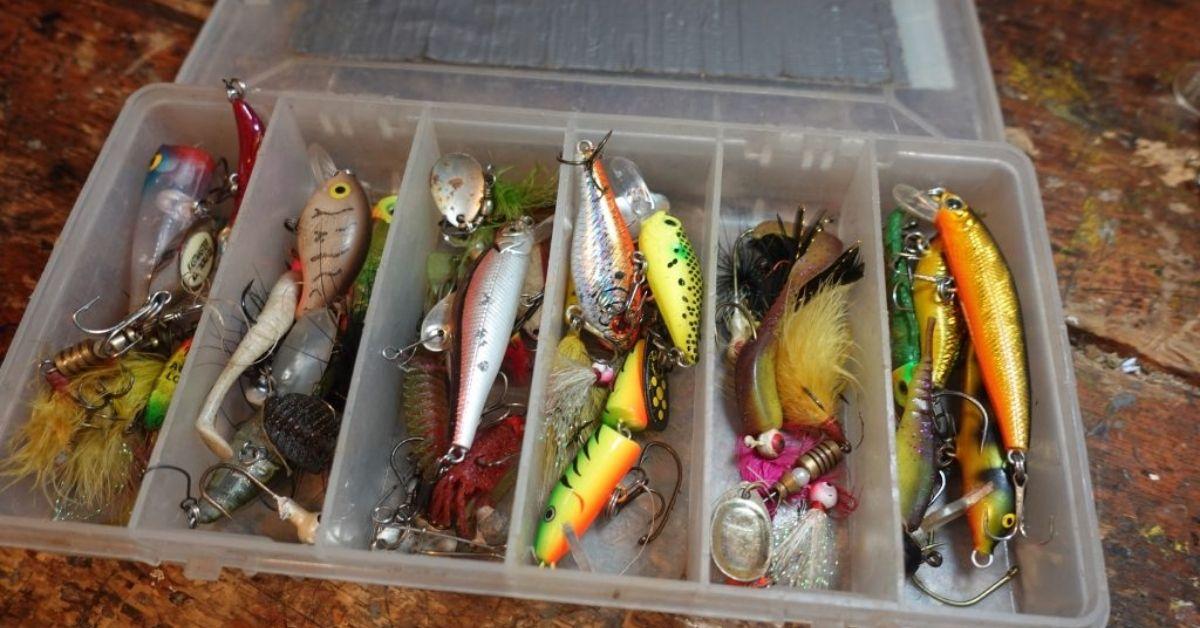7 Crappie Lures You Can Rely On All Winter Long
The cold water of winter slows down a crappie’s metabolism making the fish lethargic.
Crappie still have to eat during the winter and fortunately, their forage is also sluggish so crappie can mosey up to a baitfish and use a short burst of energy to pick off an easy meal. The key to catching crappie then is to rely on a slow presentation with a lure that can dive to the mid-depth of the water column for suspended fish or drop quickly to brush or rock piles in deep water.
Here are seven lures you can depend on to catch crappie throughout winter:
1) Marabou Jigs
The tail feathers of a marabou jig undulate in the water even when the lure is sitting still, which makes it ideal for tempting cold water crappie into biting. I favor a 1/16-ounce jig most of the time but will switch to a 1/8-ounce model on windy days so I can feel the lure better. This jig works best on a vertical presentation for fish either suspended at mid-depths or hovering over brush.
2) Tube Jigs
The tentacles of a soft plastic tube pulsates in the water when the lure is hardly moving so it is also an easy meal for lethargic crappie to inhale. The lure also has a unique spiral as it falls through the water that imitates a crippled or dying baitfish crappie can easily attack. I also fish this lure vertically over brush or set it 6 to 8 feet below a bobber to tempt suspended fish in open water or around the fronts of docks.
3) Fuzzy Grubs
This lure combines a soft plastic body with a marabou tail that looks and feels more natural to a crappie. The pulsating marabou tail attracts a lethargic crappie to the lure and the soft plastic body feels more natural so the crappie will keep the bait in its mouth longer making it easier for you to detect a light bite and set the hook before the fish spits it out. I vertically fish this lure the same way I present marabou and tube jigs.
4) Stinger Tail Minnows
Shad- or minnow-shaped plastic grubs with a long thin tail are my favorite wintertime lures for casting to schools of winter crappie either in open water or around docks and brush piles. I usually cast past my target with the grub on a 1/16-ounce jighead and count the lure down to the depth of the crappie or brush I see on my electronics. Then I swim the lure at a slow pace and occasionally twitch my rod to imitate an injured baitfish.
5) Micro Swimbaits
The body of a swimbait best resembles the profile of a baitfish and the lure’s paddle tail movement imitates the swimming action of a shad. Tie on a 2- or 3-inch swimbait in shad hues with a 1/8-ounce jighead and retrieve the lure with a subtle pump-and-fall presentation to best imitate a dying baitfish.
6) Jigging Spoons
When fishing deeper than 25 feet for wintertime crappie, a 1/8-ounce jigging spoon is the best option for getting your lure down quickly to the fish. A vertical presentation is best for crappie hugging the bottom or holding slightly above brush piles. You can slightly shake the spoon to coax sluggish crappie into biting or slowly lift the lure and let it fall for more active fish.
7) Suspending Jerkbaits
I frequently noticed years ago that the biggest wintertime crappie were accidentally caught by bass anglers jerking suspending stickbaits. Now suspending stickbaits have become part of some savvy crappie anglers’ arsenal of wintertime baits. I like to throw a 3-inch suspending jerkbait for catching numbers of crappie and upgrade to a 4- or 5-inch model for tricking slab-sized fish. The standard jerk-and-pause retrieve used by bass anglers also produces for wintertime suspended crappie.
The tail feathers of a marabou jig undulate in the water even when the lure is sitting still, which makes it ideal for tempting cold water crappie into biting. I favor a 1/16-ounce jig most of the time but will switch to a 1/8-ounce model on windy days so I can feel the lure better. This jig works best on a vertical presentation for fish either suspended at mid-depths or hovering over brush.
Updated November 18th, 2024 at 3:34 PM CT


